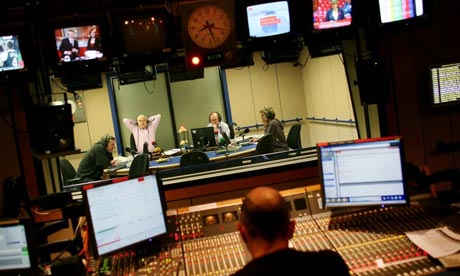Three drugs were prohibited yesterday; a synthetic cannabinoid often sold as ‘spice’, the synthetic stimulant benzylpiperazine or BZP, and the synthetic sedative gammabutyrolactone or GBL which also happens to be an industrial solvent. All have been brought within the Misuse of Drugs Act 1971, GBL and BZP becoming class C drugs (subject to penalties of up to 2 years prison for possession or 14 years in prison for supply) whilst ‘Spice’ becomes a Class B (subject to up to 5 years in prison for possession or 14 years for supply).

There’s a lot one could say about this move, but first it should be made clear that these drugs are clearly not without risks and there is no reason to argue with the harm assessments of them presented by the ACMD to the Government that informed the decisions (although the B decision for spice is distorted by the recent cannabis politics more than relative harm rankings). Legal status does not imply safety and never has, the 'legal highs' alcohol and tobacco highlighting this point very clearly.
However, what can be disputed is whether the move will have any positive impacts. In reality there are three likely outcomes – all of which reflect the fact that changes in legislation do not impact on overall demand for the intoxication/experiences these drugs provide:
- Users of these formerly ‘legal highs’ will revert to the ‘illegal highs‘ that spice etc provided an alternative or substitute for. So we can reasonably expect a rise in cannabis use (instead of spice) as well as stimulants, including ecstasy, cocaine and amphetamines (instead of BZP and GBL). Whether this substitution has a positive or negative impact on risks and overall health harms is not clear, but the young people involved will certainly face increased risk both from interacting with an illegal market controlled by criminals, and from the law itself: the real risk of a criminal record or spell in prison. Criminal suppliers will be the obvious beneficiaries.
- Some users of these formerly ‘legal highs’, assuming they are preferred to the illegal alternatives, will continue to use them but now obtain them by via illegal sources that will inevitably emerge to meet any remaining demand if the profit opportunity presents itself. It is hard to gauge to what degree this will occur (probably not at all with spice/cannabis but reasonably likely to some extent with BZP/GBL), and it is worth noting that the use of ketamine has increased since 2006 when it was prohibited and its status changed from ‘legal high’ to ‘controlled drug’. Again criminal suppliers are the obvious beneficiaries, not young people, who in this case are indisputably worse off.
- A void will be created in the market that will be potentially filled by new drugs brought to market by the same back street chemists and largely unregulated business interests responsible for bringing us GBL, BZP, Spice etc. Of course it is the absence of legal regulated supply of cannabis, ecstasy etc. that created the market opportunity for these (formerly) 'legal highs' to emerge in the first place, and this latest ban will just repeat the dynamic. The inevitable next generation of ‘legal highs’ (including mephedrone for example) may or may not be less risky than their predecessors and we will certainly know even less about their risks - the young people consuming them without any useful risk information eventually providing the risk data for the ACMD to make their next assessment (assuming it is ever quorate again).
Looking at the bigger picture then it is clear that prohibition created the problem with these ‘legal highs’ in the first place, and prohibiting them now is highly unlikely to deliver public health benefits (demand being met through other channels or substitute drugs) but will potentially create increased risks and overall social and health harms. The primary beneficiaries are the criminal suppliers who will see their markets expand as supply shifts from legal to illicit sources, and the Home Secretary and Government who get a few 'get tough' headlines from their 'crackdown'.
It is notable that at no point was legally regulating the market in these or any other drugs rationally explored at Government level. The Impact Assessments that went along with the consultations for GBL and BZP only looked at prohibiting them under the MDA or leaving them in the admittedly unsatisfactory unregulated market niche they occupied until yesterday. Neither is a good option – but the third and obviously sensible choice of strict legal regulation was never even considered. This was for transparently political rather than rational or pragmatic reasons.
This failing is particularly striking in the case of BZP as New Zealand had previously established a legal regulatory model (a ‘Class D’ appended to their A-B-C classification system) for the legally regulated supply of BZP. Transform had alerted the ACMD and Home Office to this system in 2006 when the BZP issue first rose to prominence – and whilst the ACMD apparently held meetings with their New Zealand counterparts no suggestion was made for it to be implemented (although former ACMD chair David Nutt has subsequently suggested a exploration of such a system for legal regulation of cannabis availability would be sensible). We expect politicized drug war myopia from the Home Office, but The ACMD – nominally a non-political and independent scientific entity - have no such excuse and must take some responsibility for the negative policy outcomes of their classification recommendations with these drugs. Good science in harm evaluations becomes largely meaningless when it translates into criminal justice policy and a hierarchy of prison sentences, the impacts of which go entirely un-evaluated.
Transform have proposed clear and detailed models for regulating different types of drugs that we hope will feature in future discussions, as a first step they must be an essential element of Impact Assessments when such decisions are being made.



















